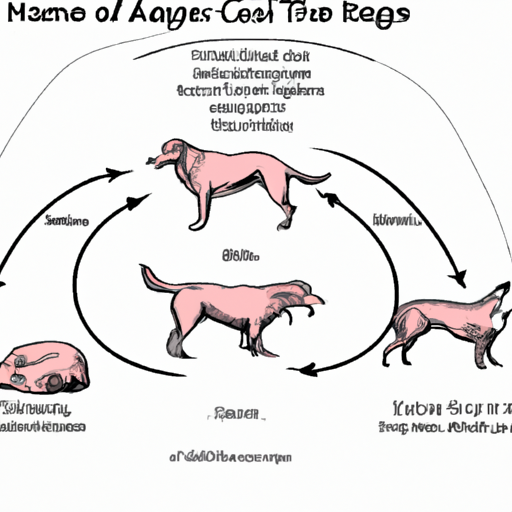Understanding the Canine Heat Cycle
As a caregiver, you’re likely familiar with the various health-related aspects that come into play when caring for your dog. The canine heat cycle, or estrus cycle, is a vital part of this understanding. This biological process is much like the menstrual cycle in humans, marking the period when female dogs are receptive to mating and can become pregnant.
Typically, the heat cycle in dogs lasts around 18 to 21 days, but it can vary between different breeds and individual dogs. It’s essential to understand the different stages of the heat cycle as each carries unique characteristics and requirements.
Key Stages of the Heat Cycle
The canine heat cycle comprises four primary stages:
-
Proestrus: This is the beginning stage of the heat cycle. You may notice that your dog’s vulva is swollen, and she may exhibit changes in behavior, such as increased urination or more clingy than usual. This stage lasts approximately 9 to 10 days.
-
Estrus: Also known as the mating stage, this is when your dog is most receptive to breeding. The vulva remains swollen, but the bleeding becomes less intense and changes to a straw-like color. This stage also lasts approximately 9 to 10 days.
-
Diestrus: This stage marks the end of your dog’s heat cycle. The swelling and discharge subside, and your dog is no longer interested in mating. If fertilization has occurred, this stage marks the beginning of pregnancy.
-
Anestrus: This is the resting stage before the heat cycle begins again. This period can last anywhere from 100 to 150 days.
Here’s a quick reference table to sum up the stages:
| Stage | Duration | Signs |
|---|---|---|
| Proestrus | 9-10 days | Swollen vulva, bleeding |
| Estrus | 9-10 days | Straw-like discharge, receptive to breeding |
| Diestrus | 60-90 days | End of discharge, start of pregnancy (if applicable) |
| Anestrus | 100-150 days | Resting phase |
Managing Your Dog’s Heat Cycle
Caring for a dog in heat can seem daunting. However, with appropriate measures, you can help your dog navigate this period comfortably.
- Maintain Cleanliness: Use dog-safe wipes to clean the vaginal area regularly to avoid infections and keep your dog comfortable.
- Invest in Dog Diapers: These can be useful in managing the discharge and keeping your home clean.
- Provide Extra Care and Attention: Dogs can become more anxious or irritable during their heat cycle. Be patient and provide extra comfort during this time.
When to Seek Veterinary Assistance
While the heat cycle is a natural process, complications can arise. Contact your vet if you notice:
- Excessive bleeding or discharge lasting longer than usual
- Signs of discomfort or pain
- Changes in appetite or behavior
FAQ Section
Q: How often does a dog go into heat?
A: On average, dogs go into heat twice a year, approximately every six months.
Q: Can I prevent my dog from going into heat?
A: Yes, spaying (ovariohysterectomy) is a surgical procedure that prevents female dogs from going into heat and getting pregnant.
Q: What are the signs that my dog is in heat?
A: Common signs include a swollen vulva, bleeding, increased urination, and changes in behavior.
Q: Can a dog in heat be walked normally?
A: Yes, but be cautious. Male dogs will be attracted to her scent, so it’s best to avoid dog parks and other crowded areas.
Remember, as a caregiver, your understanding of your dog’s heat cycle plays a crucial role in her health and happiness. Stay informed, stay compassionate, and seek veterinary advice when needed.



